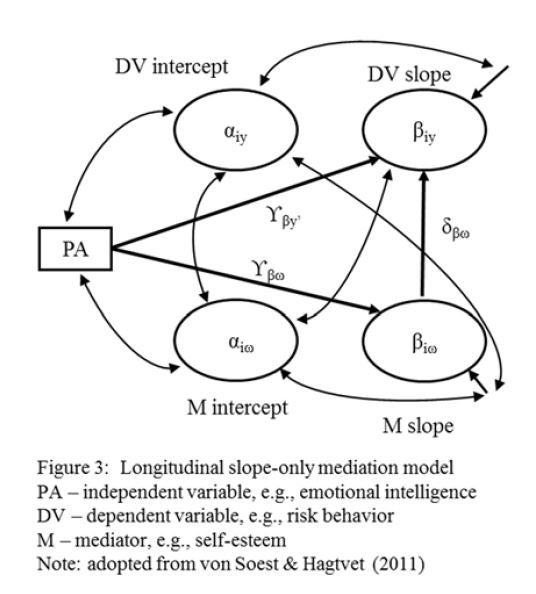Aim 1b
Goal: To test the hypothesis that changes in SECD mediated effects on student outcomes
Available in the dataset are multiple measures of SECD for students. Data collected at each of the eight waves include measures on self-development, prosocial interactions, honesty with self and others, self-control, and respect for teachers, to name a few. As reported, it is already known that students experienced differential growth (depending on condition) in SECD over the eight waves of data.
It is hypothesized that variations in SECD student growth explain some of the effects of PA (i.e., partial mediation) on student outcomes (e.g., attitudes towards positive behaviors, reported social skills, academic performance). Therefore, mediation models of PA effects on SECD will be extended, using PPM and LDS analyses, to test SECD mediation levels on student outcomes. Other other sophisticated mediation analyses will be considered, including confirming previously reported findings and beyond.
A deep exploration of SECD mediation characteristics is crucial to improving future revisions of the program to produce even better long-term student outcomes. Therefore, the analysis of SECD will be extended by including growth estimates of combined SECD measures. For example, it is hypothesized that a latent construct measuring student respect, manifested from two other constructs (respect for teachers and respect for parents) explains partially the effect of PA on the student outcome of health behavior.
One approach that will be explored is using data reduction procedures to identify opportunities to remove unnecessary or redundant variables, thereby identifying variables that can represent a single construct prior to testing mediation effects. Another approach to test this hypothesis (and other mediators that represent associated measures) is to use an extension of the PPM model in Figure 3 by adding two measures to the model that, when combined, represent the baseline (i.e., intercept) and growth (i.e., slope) estimates of the overall mediator construct (see Figure 5). This type of model is also called a factor-of-curves model (Wickrama, Lee, O’Neal, & Lorenz, 2016) because the mediator is a factor of multiple intercepts and slopes.
Figure 3:

Figure 5:
